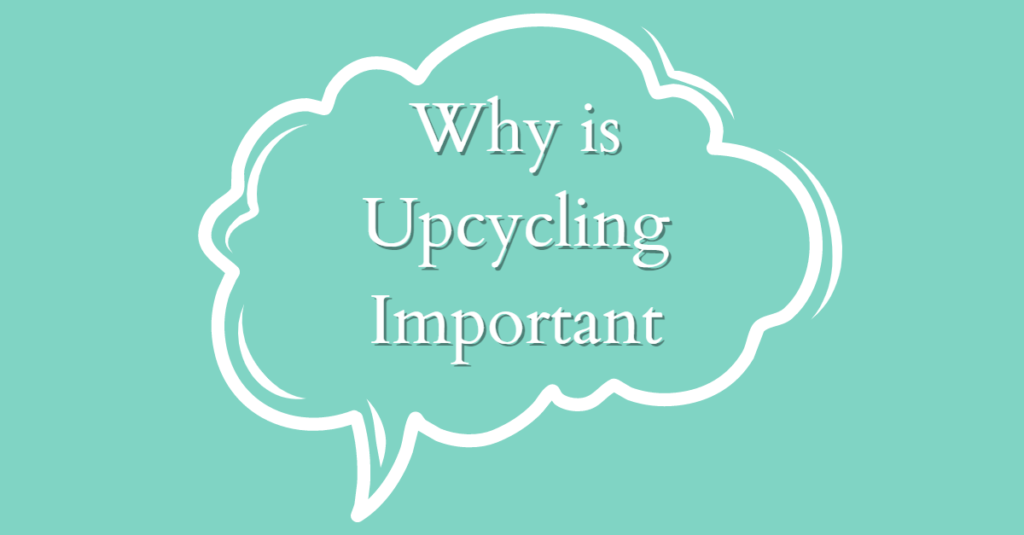Why is Upcycling Important
Introduction
In a world grappling with mounting waste and environmental challenges, the concept of upcycling has gained significant traction. Upcycling offers a fresh perspective on waste management by transforming discarded materials into new, valuable, and functional products. It stands as a powerful tool in combating excessive consumption, reducing waste generation, and promoting a sustainable and circular economy. In this article, we delve into the reasons why upcycling is important and how it contributes to a greener and more resilient future.
-
Minimizing Waste and Reducing Landfill Burden:
One of the primary reasons why upcycling holds immense value is its ability to minimize waste and alleviate the burden on landfills. Traditional recycling often requires significant energy and resources for processing and may result in downgraded materials. Upcycling, on the other hand, repurposes materials creatively, transforming them into new products of higher value. By diverting waste from landfills and giving it a new life, upcycling reduces the strain on our waste management infrastructure and prevents the release of harmful pollutants into the environment.
-
Conservation of Resources:
Upcycling contributes to the conservation of resources by extending the lifespan of materials and reducing the need for new resource extraction. Instead of relying on virgin raw materials, upcycling utilizes existing resources, thereby minimizing energy consumption, water usage, and carbon emissions associated with extraction and production processes. By preserving natural resources, upcycling helps mitigate environmental degradation, habitat destruction, and ecosystem disruption caused by resource extraction.
-
Energy and Carbon Footprint Reduction:
The practice of upcycling significantly contributes to energy conservation and the reduction of carbon footprints. Compared to manufacturing products from scratch, upcycling generally requires less energy and emits fewer greenhouse gases. By repurposing existing materials, upcycling minimizes the energy-intensive processes involved in extraction, refining, and production. This results in a lower carbon footprint, reduced reliance on fossil fuels, and decreased air pollution, ultimately contributing to climate change mitigation.
-
Stimulating Creativity and Innovation:
Upcycling fuels creativity and innovation by encouraging individuals to think outside the box and find new uses for discarded materials. It inspires a shift in mindset, transforming waste into valuable resources. Upcycling projects often involve artistic expression and unique designs, allowing individuals to showcase their creativity while contributing to sustainable practices. By embracing upcycling, we foster a culture of innovation and promote the development of sustainable design solutions.
-
Encouraging Local and Community Engagement:
Upcycling initiatives provide opportunities for local and community engagement, fostering a sense of empowerment and collective action. Community-based upcycling projects can create spaces for skill-sharing, collaboration, and education. By involving individuals, organizations, and businesses in upcycling efforts, communities can work together to tackle waste issues, promote sustainable practices, and strengthen social connections. Upcycling also offers economic opportunities by supporting local artisans and entrepreneurs who create unique upcycled products.
-
Reducing Environmental Impact of Fast Fashion:
The fashion industry is known for its significant environmental footprint, particularly due to fast fashion and its disposable nature. Upcycling presents an alternative by breathing new life into pre-existing garments, fabrics, and accessories. By upcycling clothing and textiles, we reduce the demand for new clothing production, which requires vast amounts of water, energy, and resources. Upcycled fashion promotes individuality, sustainable consumption, and the reduction of textile waste, contributing to a more circular and responsible fashion industry.
-
Shifting Consumer Mindset and Promoting Sustainable Choices:
Upcycling plays a crucial role in shifting consumer mindsets towards sustainability and conscious consumption. It encourages individuals to question the throwaway culture and consider the environmental impact of their choices. By embracing upcycled products, consumers support environmentally friendly alternatives and contribute to a circular economy. Upcycling also raises awareness about the value of repurposed goods and challenges the notion that new is always better.
Conclusion
Upcycling offers a transformative approach to waste management, empowering individuals and communities to turn discarded materials into valuable resources. By minimizing waste, conserving resources, reducing carbon footprints, stimulating creativity, and fostering community engagement, upcycling contributes significantly to sustainable development. Embracing upcycling practices allows us to rethink our relationship with waste and consumption, leading us toward a greener, more resilient future. Together, let us harness the power of upcycling to create a world where waste is seen as a valuable opportunity for creativity and sustainability.

My name is Rohit Vagh and I’m a content writer specializing in fashion and lifestyle. I have three years of experience in this field and have written various articles. My writing style is creative and engaging, and I strive to create content that resonates with my readers. I have a deep passion for fashion and am constantly researching the latest trends and styles to make sure my readers are up to date. I’m excited to continue my career in blogging, and I’m always looking for new opportunities in the fashion and lifestyle space.





